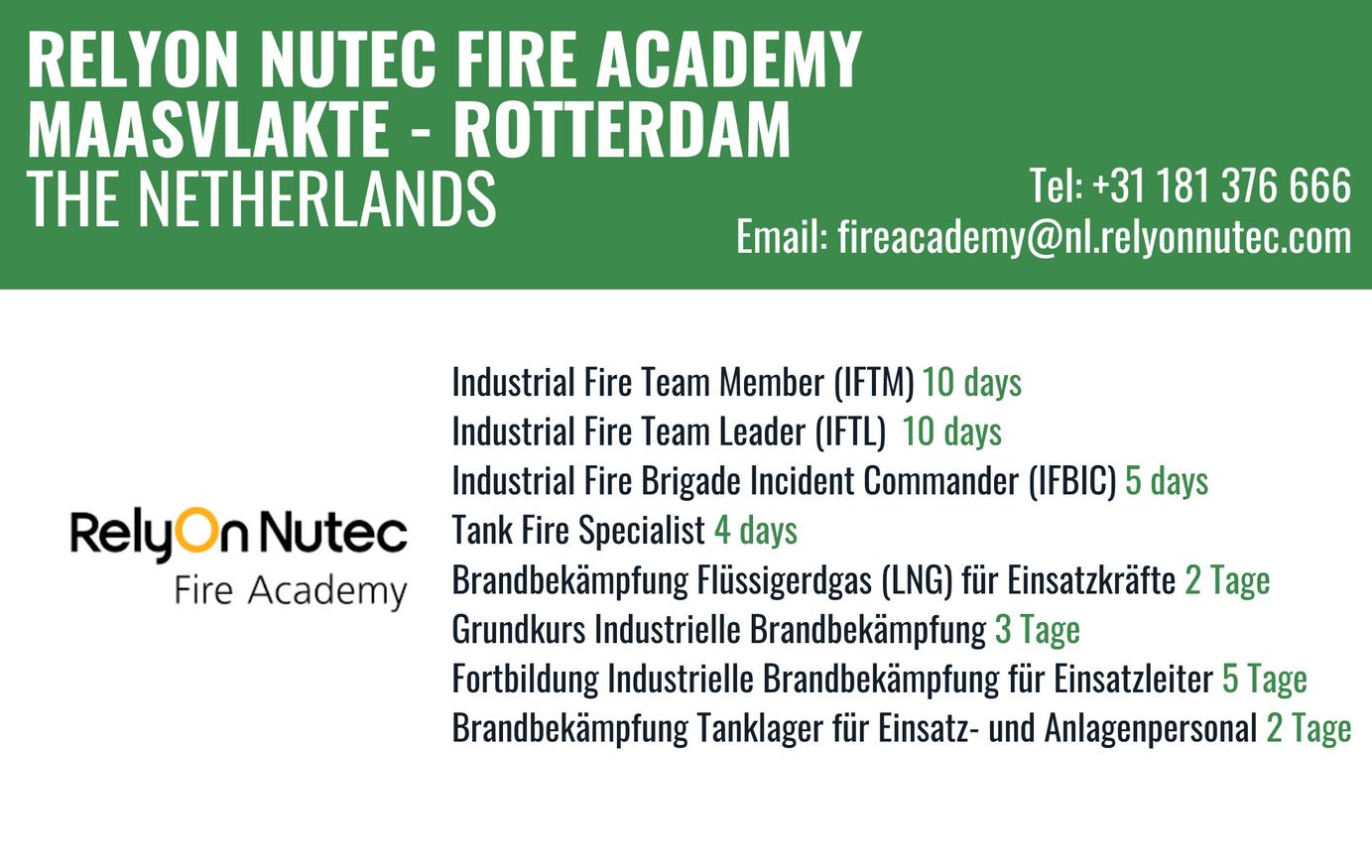
6 minute read
Storage Tank Fire at Intercontinental Terminals Company, LLC (ITC) Terminal
On Sunday, March 17, 2019, a large fire erupted at the Intercontinental Terminals Company, LLC (ITC) bulk liquid storage terminal located in Deer Park, Texas. The fire originated in the vicinity of Tank 80-8, an 80,000-barrel aboveground atmospheric storage tank that held a blend of naphtha and butane product, a flammable liquid. Once the fire erupted, ITC was unable to isolate or stop the release. As a result, the fire burned, intensified, and spread to the other 14 tanks located in the same containment area. The fire burned for three days, until it finally was extinguished on Wednesday, March 20, 2019. The fire caused substantial property damage at the ITC Deer Park terminal, including the destruction of fifteen (15) 80,000-barrel aboveground atmospheric storage tanks and their contents.

Advertisement
The incident also significantly impacted the environment. A containment wall around the tanks breached and released an estimated 470,000–523,000 barrels of hydrocarbon and petrochemical products, firefighting aqueous film forming foam, and contaminated water into Tucker Bayou and adjacent water, sediments, and habitats. From there, the released materials flowed into Buffalo Bayou and were carried out by streamflow and tides into the Houston Ship Channel and surrounding waters. A seven-mile stretch of the Houston Ship Channel adjacent to the ITC Deer Park terminal was closed, as were several waterfront parks in Harris County and the City of LaPorte, due to the contamination.
The incident did not result in any injuries or fatalities; however, the local community experienced serious disruptions, including several shelter-in-place orders because of benzene-related air quality concerns. A shelterin-place was issued for the entire City of Deer Park at one point, and local schools and businesses either closed or operated under modified conditions. A portion of a major highway in the area also was closed. ITC estimated that property damage resulting from the loss of the First & Second 80’s tank farm associated with the March 17, 2019, incident exceeded $150 million
Safety Issues
The U.S. Chemical Safety and Hazard Investigation Board’s (CSB’s) investigation identified the safety issues below.
• Pump Mechanical Integrity. ITC did not have a formal mechanical integrity procedure in place that defined requirements for maintaining the mechanical integrity of Tank 80-8 and its associated equipment, including the Tank 80-8 circulation pump. A formal mechanical integrity program for pumps in highly hazardous chemical service could have prevented this incident by providing ITC with additional opportunities to identify pump issues prior to the incident. The mechanical seal on the pump failed on March 17, 2019, allowing butane-enriched naphtha product to release from the pump while it continued to operate.
• Flammable Gas Detection Systems. Tank 80-8 was not equipped with a flammable gas detection system to warn personnel of a hazardous atmosphere resulting from loss of containment from the tank or its associated equipment. In 2014, a hazard review team recommended the addition of flammable gas detection systems near Tank 80-8; however, ITC did not implement this recommendation, and did not document why it was not implemented. In the absence of a flammable gas detection system, there were no alarms to alert personnel about the initial release of butane-enriched naphtha product around the Tank 80-8 piping manifold. Consequently, the butane-enriched naphtha product continued to release from the failed pump for approximately 30 minutes, completely undetected, before its flammable vapors eventually ignited.
• Remotely Operated Emergency Isolation Valves.
Tank 80-8 and the other aboveground storage tanks located in the First & Second 80’s tank farm were not equipped with remotely operated emergency isolation valves (ROEIVs) designed to mitigate process releases remotely from a safe location. The primary drivers for identifying the need for this type of equipment would have been through implementation of hazard assessments, such as those required by the Occupational Safety and Health Administration (OSHA) Process Safety Management (PSM) standard and the U.S. Environmental Protection Agency (EPA) Risk
Management Program (RMP) rule, as well as insurance company audits and/or corporate risk evaluations results. On the day of the incident, the large volume of butaneenriched naphtha product contained in Tank 80-8 could not be remotely or automatically isolated, and it continued to release, via the failed pump, fueling the fire that continued to intensify around the tank. As the Tank 80-8 fire intensified, flames from the fire spread to adjacent tank piping manifolds in the tank arm and eventually compromised the equipment, causing breaches in piping that allowed the hydrocarbon and petrochemical products contained in the storage tanks to release into the common containment area.
• Tank Farm Design.
Although the First & Second 80’s tank farm was designed largely in accordance with applicable National Fire Protection Association (NFPA) 30 requirements, elements of the tank farm design, including tank spacing, subdivisions, engineering controls for pumps located inside the containment area, and drainage systems, made it difficult for emergency responders to slow or prevent the spread of the initial fire and allowed the fire to spread to other tanks within the tank farm. While NFPA 30 defines minimum requirements for tank farm design, additional industry guidance documents provide more robust tank farm design recommendations. While ITC was not required to implement additional industry guidance recommendations, many of which were developed after construction of the First & Second 80’s tank farm, implementation of such recommendations could have prevented the escalation of this incident.
• PSM and RMP Applicability.
ITC did not apply a formal process safety management program to Tank 80-8 because neither the OSHA PSM standard nor the EPA RMP rule applied to Tank 80-8 and its associated equipment. Tank 80-8 was not covered by the OSHA PSM standard due to the atmospheric storage tank exemption in the standard, and the EPA RMP rule did not apply due to the flammability rating exemption in the rule for the butane-enriched naphtha mixture. Although ITC applied some process safety management elements across the terminal, the company did not apply other key elements, such as Mechanical Integrity and Process Hazard Analysis, to atmospheric storage tanks in highly hazardous chemical service.
Applying these elements would have provided the company with additional opportunities to identify and control hazards through multiple layers of protection, including the examples of preventative and mitigative safeguards discussed in this report. Thus, had ITC developed and implemented a comprehensive process safety management program that effectively identified and controlled hazards for Tank 80-8 and its related equipment, the incident could have been prevented.
Cause
The CSB determined that the cause of the incident was the release of flammable butaneenriched naphtha vapor from the failed Tank 80-8 circulation pump, which accumulated in the area and ignited, resulting in a fire. Contributing to the severity of the incident were the absence of a flammable gas detection system to alert the operators to the flammable mixture before it ignited approximately 30 minutes after the release began, and the absence of remotely operated emergency isolation valves (ROEIVs) to safely secure the flammable liquids in Tank 80-8 and the surrounding tanks in the First & Second 80’s tank farm.
Elements of the tank farm design, including tank spacing, subdivisions, engineering controls for pumps located inside the containment area, and drainage systems also contributed to the severity of the incident by allowing the fire to spread to other tanks within the tank farm. The resulting accumulation of hydrocarbon and petrochemical products, firefighting foam, and contaminated water in the secondary containment area ultimately contributed to a breach of the containment wall and a release of materials to the local waterways.
Finally, the CSB determined that because of the atmospheric storage tank exemption contained in the OSHA PSM standard and the flammability exemption contained in the EPA RMP rule, ITC was not required to develop and implement a formal PSM program for Tank 80-8 and its associated equipment that could have provided a process to identify and control the specific hazards that resulted in this incident, which also contributed to this incident.
Recommendations
(These recomendations have been sumarised, please view the full article for further detail)
• Develop and implement a process safety management system for all atmospheric storage tanks and associated equipment in highly hazardous chemical service at the ITC Deer Park terminal.
• Establish a condition monitoring program for all pumps in highly hazardous chemical service at the ITC Deer Park terminal.
• Install flammable gas detection systems with associated alarm functions in product storage and transfer areas at the ITC Deer Park terminal.
• Install remotely operated emergency isolation valves configured to "Fail-Closed" for all atmospheric storage tanks containing highly hazardous chemicals or liquids with an NFPA3 or higher flammability rating at the ITC Deer Park terminal.
• Evaluate the design of all new and existing tank farms at the ITC Deer Park terminal against the applicable sections of API STD 2610 and NFPA 30.
To view full the full 100-page report, please visit this link: https://www.joiff.com/wp-content/ uploads/2023/07/CSB-Catalyst-Q3.pdf
The CSB is an independent federal agency charged with investigating, determining, and reporting to the public in writing the facts, conditions, and circumstances and the cause or probable cause of any accidental chemical release resulting in a fatality, serious injury, or substantial property damages.
The CSB issues safety recommendations based on data and analysis from investigations and safety studies.
The CSB advocates for these changes to prevent the likelihood or minimize the consequences of accidental chemical releases.
More information about the CSB and CSB products can be accessed at www.csb.gov or obtained by contacting:
U.S. Chemical Safety and Hazard Investigation Board
1750 Pennsylvania Ave. NW, Suite 910 Washington, DC 20006 (202) 261-7600























